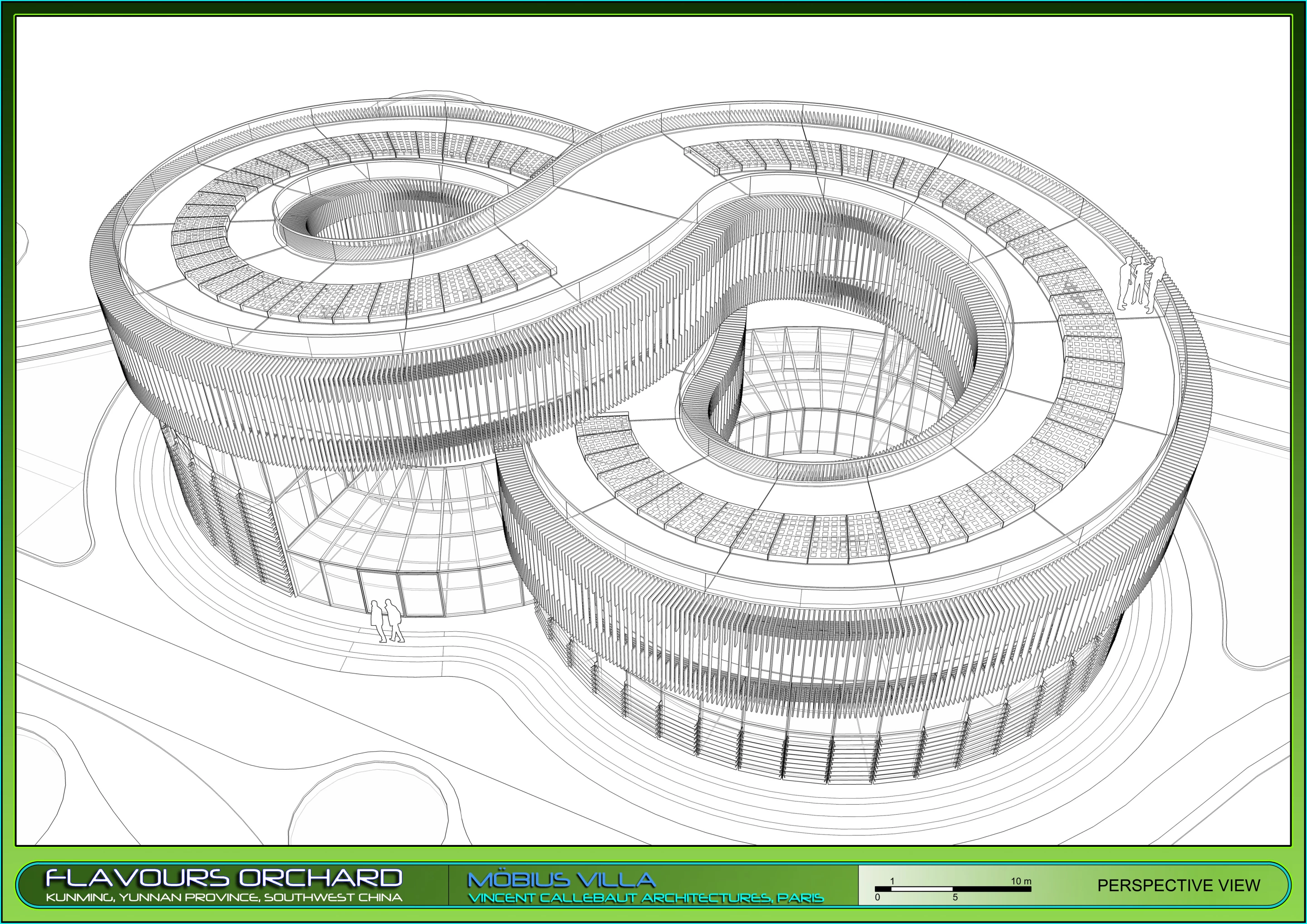Architect Vincent Callebaut has unveiled ambitious plans to create an energy-producing community comprising 45 futuristic villas in the southwestern Chinese city of Kunming. Though likely to remain on the drawing board for the foreseeable future, the Flavours Orchard concept offers plenty of food for thought and some interesting renders to pore over.
Callebaut's practice is the same firm behind several other eye-catching, blue-sky concepts that have previously appeared on Gizmag, such as the Lilypad Floating City and the Shenzhen Farmscrapers.
The Flavours Orchard community is slated for location on reclaimed former industrial wasteland that measures over 9 hectares (22 acres). Once finished, the sizable area would sport rainwater-collecting lagoons, wind turbines, solar panels, electric bicycles, and driverless electric cars. Thanks to the abundance of food-producing plants and gardens, the inhabitants would be able to produce more than enough food for themselves to live comfortably.

There are three types of villa design envisioned for the settlement. The Mobius Villa takes aesthetic cues from an infinite ribbon design and features a large green roof, while the Mountain Villa is inspired by a large Chinese fan and features a dynamic facade that opens to follow the sun's path. The Shell Villa, meanwhile, resembles a Chinese hat and sports a large wind turbine.
All three villas are airtight, employ an automatic ventilation system, and highly efficient domestic appliances. LED lighting is automatically activated when an occupant enters each room, and the homes contain large triple-glazed north and south-facing windows. Heavy insulation, geothermal heat pumps, solar and thermal panels, and grey water recycling complete the shopping list of energy-efficient tech.
Callebaut rates the total energy production of the villas at somewhere around twice as much as what would be needed for the occupants to live comfortably, so there would be a large energy surplus. No figures are offered concerning how much the average harvest yield of the various food-producing gardens would be.
Hit the gallery for a closer look at this visually stunning concept design.
Source: Vincent Callebaut Architectures














































































